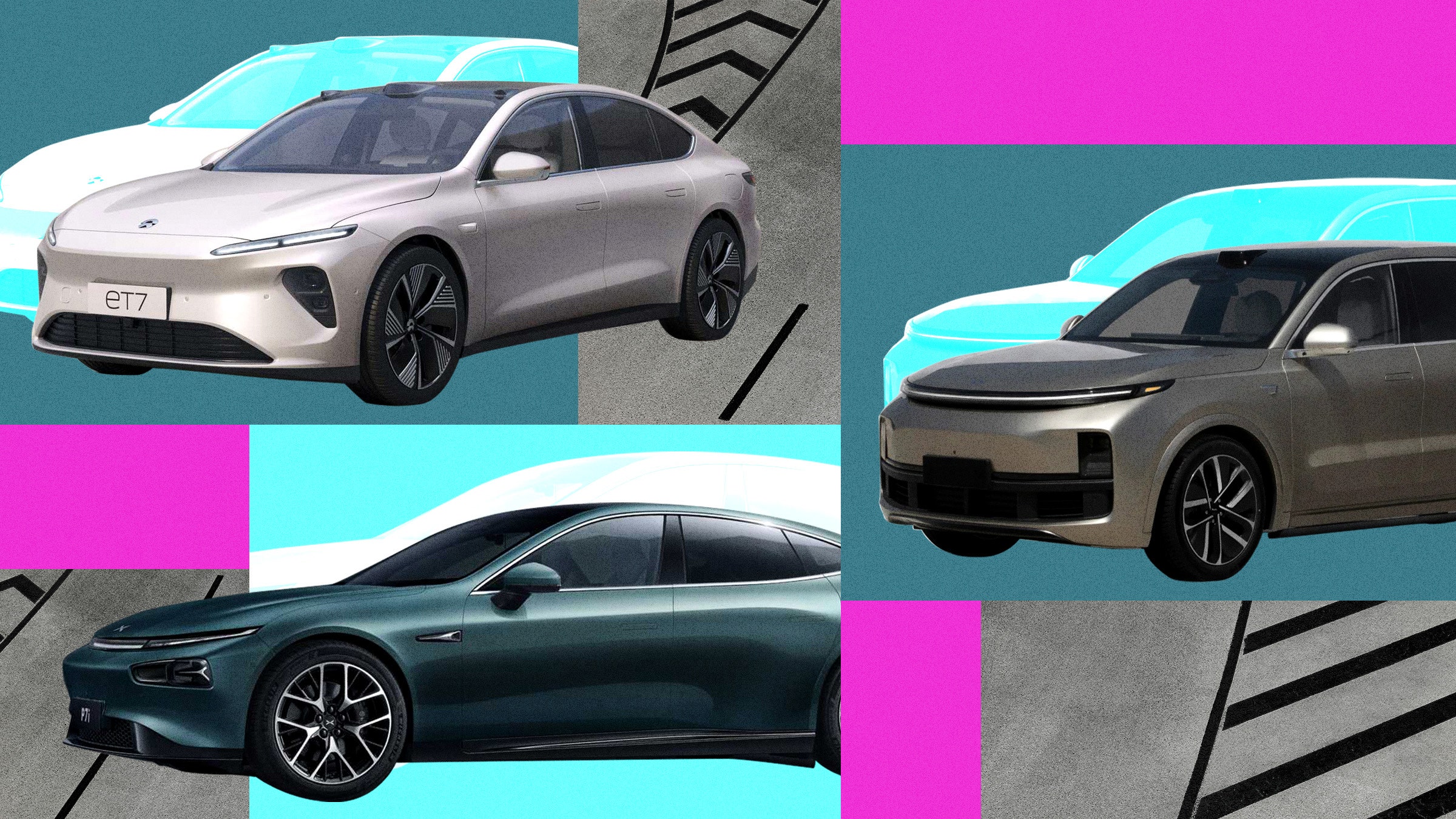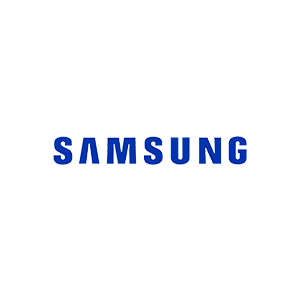We're still waiting for the full promise of self-driving cars to be realized. After all, fleshy, unreliable humans are killing more people than ever on US roads. And now Apple fans could be waiting indefinitely as poor Project Titan has been killed off after its owner gave up on human-free control.
Still, there are glimmers of hope. Just this month, Waymo secured approval from California regulators for paid robotaxi rides on San Francisco freeways and other highways in the Bay Area, meaning that autonomous trips to San Francisco International Airport will be possible. In Germany, as of March 1, BMW is allowing Level 3 hands-off driving to be turned on in the 7 Series.
On the flip side, Tesla and General Motors have been grabbing most of the recent headlines when it comes to self-driving cars in the hands of the public, and for all the wrong reasons—mass recalls, suspended licenses, spending cuts, and huge losses.
But in China, a number of companies are steadily—and far more successfully—moving toward a similar destination, but via a different route.
Since the introduction of XPilot with its first model, the G3, XPeng has been one of the leaders in autonomous driving in China. However, since then it has also been joined in the arena by the other two China EV startups, Nio and Li Auto.
There are other China-based companies with lidar-equipped cars—for instance, Huawei is cooperating with a number of brands such as Avatr to bring a solution—but here we're going to focus on Xpeng, Nio, and Li Auto, as all are listed on US stock exchanges. All three also currently offer self-driving—or as they prefer to call them for legal reasons, “driving assistance features”—on their current vehicle line-ups.
So, how do the top-level systems from each compare, what can they currently do, and what is coming soon?
Tesla’s Elon Musk has been vehement in his dismissal of the need for lidar and has now even removed radars from US market models. However, recently he has admitted that Tesla is testing a custom-designed radar, but then insisted that there are no plans to integrate it. In China, the US-listed trio is taking an approach that embraces a variety of sensors, most notably including lidar.
Whereas XPeng cars have two lidar units mounted in the front bumper, both Li and Nio mount a single unit above the windscreen. Remaining sensors consist of 8-megapixel high-definition cameras, surround-view cameras, millimeter wavelength radars, and ultrasonic sensors.
XPeng and Nio have a similar total number, with 31 and 33 respectively. Li, on the other hand, takes a different approach, with a camera-first system which uses lidar as a backup and has a total of 18 sensors.
Like lidar, the Nvidia Orin X chip for processing all the information is a common denominator. Both XPeng and Li use a pair of chips to provide 508 trillion operations per second (TOPS) computing power, while the Nio Adam supercomputer uses four of the chips for a total of 1,016 TOPS. To give you some perspective on those numbers, the A17 Pro chip in Apple's iPhone 15 Pro hits 35 TOPS.
The systems from all three producers need some initial setup before they can be used. In the case of both Nio and Li, it means ensuring that the systems have been enabled and, in each case, that automatic lane changing without prompting is also selected. For XPeng there is a 10-minute safety video and short test which needs to be passed to allow the driver to use the system.
Nio NOP+
In the case of Nio, I got to experience the self-driving NOP+ Beta system twice, firstly over a few days in an ET7 sedan driving around Shanghai and the surrounding area, and secondly on a test drive of the new ES6 SUV in Beijing. The system switched from Beta to subscription on July 1 last year, and now supposedly works nationwide in China, upgraded to work on urban roads in 726 cities where it covers around 90 percent of the main roads. Upgrades include BEV (bird’s eye view) and a new perception framework which should improve performance over the system I tried.
Where the Nio system scores highly is ease of use. As with the systems from Li and XPeng, the Nio one is dependent on navigation—NOP stands for “navigation on pilot.” When Nio enters an area where NOP+ can activate, there is a voice prompt from the in-car digital assistant Nomi while a circle appears around an icon of the car on the lane traffic display on the instrument screen. Activation comes by pressing the central button of the left-hand pad on the steering wheel.
Nio's Navigate on Pilot system from 2021, the precursor to its new NOP+.
While NOP+ worked to a reasonable extent in varying conditions, including night time, it didn’t always work as well as an experienced driver. Most worryingly, it proved unreliable at making the necessary preparations for highway exits, and I overshot one exit because the car stayed in the middle lane.
The middle lane on the freeway is in fact where the system, like those of its competitors, seems to have a tendency to end up. It didn’t do a good job of getting into the outer lane to try to maximize speed, and would often be content to cruise at around 55 mph when the speed limit was 75 mph.
On one occasion the Nio moved from the outside of a highway into the middle lane, and seemed to be getting very close to a container truck with an empty trailer, leading me to question whether the system was actually sensing the trailer part or not. Furthermore, on a number of occasions, it didn’t seem to react much to cars cutting in, forcing me to take control and brake.
Li Auto NOA
Like with Nio’s NOP+, the NOA (navigation on autopilot) Highway system from Li Auto currently depends on high-definition mapping that is supposedly precise at the centimeter level, but seems able to deliver an experience far closer to that offered by XPeng’s XNGP, or Cross-Scenario Navigation Guided Pilot. This is the company’s successor to XPilot with a multimodality sensor framework including cameras, lidar units, millimeter wave radars, and high-precision positioning units.
Li Auto’s urban-based Commute NOA, introduced in June 2023, supposedly covers more than 95 percent of “common mobility scenarios” and by December was usable in 100 cities across China, including Beijing, Shanghai, Guangzhou, and Shenzhen.
To activate Li’s highway NOA, the driver needs to yank down twice on the drive selector as with Tesla (it’s also the same on XPengs). With the introduction of Li’s second-generation vehicles, starting from the L9, the company ditched an instrument display for a huge, head-up display. This not only shows the visualization of the moving traffic that the car sees around it, but also has detailed navigation prompts. With such information it makes monitoring what the system is doing while also looking at the real-world situation very easy.
Li Auto's NOA, usable in 100 cities across China, including Beijing, Shanghai, Guangzhou, and Shenzhen.
I got to experience the Li system over a few days, and drove it on some of the same routes I tried with the Nio ET7. Like with Nio, the Li system has a tendency to cut out due to the lack of high-definition mapping on the highway and on elevated roads within Shanghai (more about what happens in those situations later), but the experience is far more refined. Driving on the highway, the L9 seemed much better at trying to maximize its speed than with Nio, and far less reluctant to make lane changes.
The biggest mistake the Li made on the highway was one of the mistakes that XPeng’s auto-driving system made: trying to cross a solid white line to make a lane change. In the case of the Li it was on an elevated road within Shanghai, and the car wanted to make a lane change so that it could take an exit with limited preparation. I overrode the system and went past the exit, then I reactivated the system, only for the L9 to try again when there was still a solid white line.
XPeng XNGP
A similar situation occurred while driving an XPeng P7i in Shanghai when under XNGP, while on a highway some distance from downtown. XNGP announced it was going to start making preparation at about 1.7 kilometers from an exit it needed to take while still in the middle lane.
Of the three systems, XPeng’s is by far the most loquacious and does a lot of talking. On most occasions the announcements of making preparations were not accompanied by an immediate maneuver, but this time it was, and took me over a solid line. Although many human drivers do this, under Chinese road rules this is not permitted. Another issue it had in Shanghai was on two occasions when it took a ramp and didn’t engage the indicators before making the move.
When driving between Zhaoqing and Guangzhou in an XPeng G6, it wasn’t necessary to make any interventions, and the system worked flawlessly. When hitting a traffic jam on the highway, it didn’t demand me to take over, unlike in a similar situation with the Nio. The highway portion of XNGP is not dependent on high-definition mapping, although it does use maps as backup.
XPeng’s XNGP autonomous system navigates through heavy traffic in Beihai City in the Guangxi region on China’s southwest coast.
When Nio’s NOP+ and Li’s NOA run out of high-definition mapping, they engage Pilot and lane-keeping assistance, respectively. Nio’s Pilot is really just adaptive cruise control and is very poor at managing speed, usually driving much slower than it should and requiring manual inputs for the target speed. Everything in general becomes far less smooth.
Li, in contrast, doesn’t show such a degradation in performance when it switches to lane-keeping assistance, and it is much better at managing speed. Under lane-keeping assistance, the L9 could still undertake some maneuvers, such as lane changes.
Things Moving Fast
XPeng, at my time of testing last summer, was the only one of the three with any form of city system live and available to customers. XNGP is currently available on only Max versions (ones with lidar) of the G6, G9, X9, and P7i models, and at launch in April 2023 covered only Guangzhou, Shanghai, and Shenzhen. But, at the end of February this year, it was rolled out nationwide in China and is no longer dependent on mapping.
For those models not capable of XNGP, such as the G3i, and for drivers who have yet to satisfy the current usage requirement, XPeng's LCC (lane centering cruise) is employed, and it goes far beyond a regular cruise control, with the ability to come to a halt and start automatically at traffic lights, as well as control speed according to the speed limit. However, what it can’t do is make a turn.
I experienced the City NGP function under XNGP in a P7i in Shanghai, and later in a G6 in Guangzhou. With my second experience I soon realized it was a tale of two cities. In Shanghai it was quite smooth, and at least one of the interventions made was due to me being disoriented rather than the car. In a few other cases it was me being overly cautious.
While in Shanghai the system appeared to cut out for no obvious reason only once or twice, this happened far more frequently in Guangzhou. One possible reason for this is that the torque in the system is unable to overcome the hand on the wheel, and so the system might think you are making an intervention. Nonetheless, in Guangzhou it got stuck behind a stopped car, and on one occasion seemed to be heading for an ebike waiting to cross the road rather than entering the road it was turning into.
Two-wheeled traffic in Guangzhou in general seemed to present a challenge for the system. Unlike in Shanghai, the roads of Guangzhou do not have good separation between cars, bicycles and mopeds. At the best of times in China these road users are unpredictable, usually paying scant regard for traffic lights, road regulations, or their own safety. With the absence of dedicated or segregated lanes for them, XNGP seemed to struggle. But this was last year, of course, and the system may well have been significantly improved since then.
Forward Thinking
Moving forward, data will be the deciding factor in both the speed of change and also the capabilities of the systems, and it is here that Li might have the winning advantage. XPeng’s XNGP is available on only the Max versions of four models. In the case of Nio, all second-generation cars have the necessary hardware, but users need to pay the equivalent of $530 per month to use the system.
In contrast, Li does not charge for its system, and all L9 and Mega cars have it as standard. For the L7 and L8, there are AD Max and AD Pro versions, with the latter missing lidar but still offering NOA Highway. Factor in that Li has sold nearly 500,000 of its second-generation cars—and in December sold 50,035 cars versus 20,115 and 18,012 for XPeng and Nio respectively—and this may help the company build leadership thanks to the sheer volume of data captured.
However, in December, Nio unveiled its first in-house-developed autonomous driving chip, which will be in its ET9 flagship sedan coming 2025. The 5-nanometer chip, called the Shenji NX9031, has more than 50 billion transistors, supports 32-core CPUs, and is supposedly comparable to four Nvidia Drive Orin X chips.
Fighting back in January, Li Auto announced that it will be using Nvidia's Drive Thor autonomous driving chip in its 2025 next-gen EVs, as a successor to the Drive Orin. Drive Thor supposedly has 2,000 TOPS of performance, eight times that of Drive Orin.
Finally, aside from such advances in chip technology and autonomous coverage rollouts in China, Asian brands will clearly not be content to stay in their home countries. Last month, XPeng, already expanding into Europe, confirmed its intentions to bring its self-driving tech worldwide in 2025. “We look forward to enabling overseas users to access XPeng's autonomous driving already available in China,” Xiaopeng He, the firm's founder and CEO, said.
XPeng's ambitions are not confined to its own cars, either. In July last year, Volkswagen announced an investment of $700 million in XPeng, purchasing a 4.99 percent stake in the company. The plan is to collaborate with XPeng to develop two VW-brand electric models for the midsize segment in the Chinese market in 2026.
The contrast between XPeng and Apple's now defunct Project Titan, both founded 10 years ago, could not be more stark.






